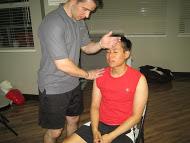CPR and bystanders

According to a survey done by the American Heart Association, over 70 percent of the respondents reported that they wouldn’t know how to react if somebody collapsed due to a cardiac emergency. Even with the numerous videos and lessons available online, at school or work, or even informational posters and pictures at the local library, most Americans still don’t know how to give CPR correctly.
This statistic makes a lot of difference when you count in the fact that almost 400,000 cardiac arrests happen outside of the hospital. This means that the people who will first react to a victim of a heart attack are bystanders, almost always a layperson or someone who doesn’t work in health care. If you think that only HCPs (health care providers) should learning something like CPR, then you’re in for a surprise.
Our programs at Portland CPR will teach you how to give compressions, ventilations, and defibrillation (if an AED is available) correctly. These basics are included in both basic and advanced courses, but more focus is placed on medical interventions in Advanced Life Support classes.
- Compressions and ventilations are done in tandem, to oxygenate the blood and make it circulate through the body. Compression:ventilation ratio is 30:2, repeated until the arrival of medical help (EMTs).
- Compressions in adults should depress the chest by at least 2 inches, 1.5 inches in children. Always allow recoil before the next compression.
- Defibrillation is only done to correct arrhythmias, not during flat line. AEDs send electricity to the heart from the machine through pads on the chest and to the heart.
Introduction to CPR training

CPR training at Portland CPR is offered in two categories: basic and advanced. Basic training uses the Basic Life Support guidelines in its curriculum will advanced training uses Advanced Life Support guidelines. The main difference between the two is simple. Basic training involves the core skills in CPR – compression, ventilation, and defibrillation. Advanced training also includes these basics but focuses on medical management skills – medication administration and use of medical equipment.
Basic Life Support
- Heartsaver – CPR/AED program for the general public, 4 hours
- Heartsaver C – CPR/AED program for HCPs, 4.5 hours
- Basic Life Support for Health Care Providers – CPR/AED program (one and two-person rescue), 4.5 hours
Advanced Life Support
- Advanced Cardiac Life Support – Advanced CPR program for health care professionals (adult management)
- Pediatric Advanced Life Support – Advanced CPR program for health care professionals (infant and toddler management)
All of the programs listed are certification courses. The credentials we award our trainees with are valid for 24 months before we require them to renew. Renewal can be done through a re-certification class for the program they originally took. However, we only offer re-certification for three programs: BLS for HCPs, ACLS, and PALS.
